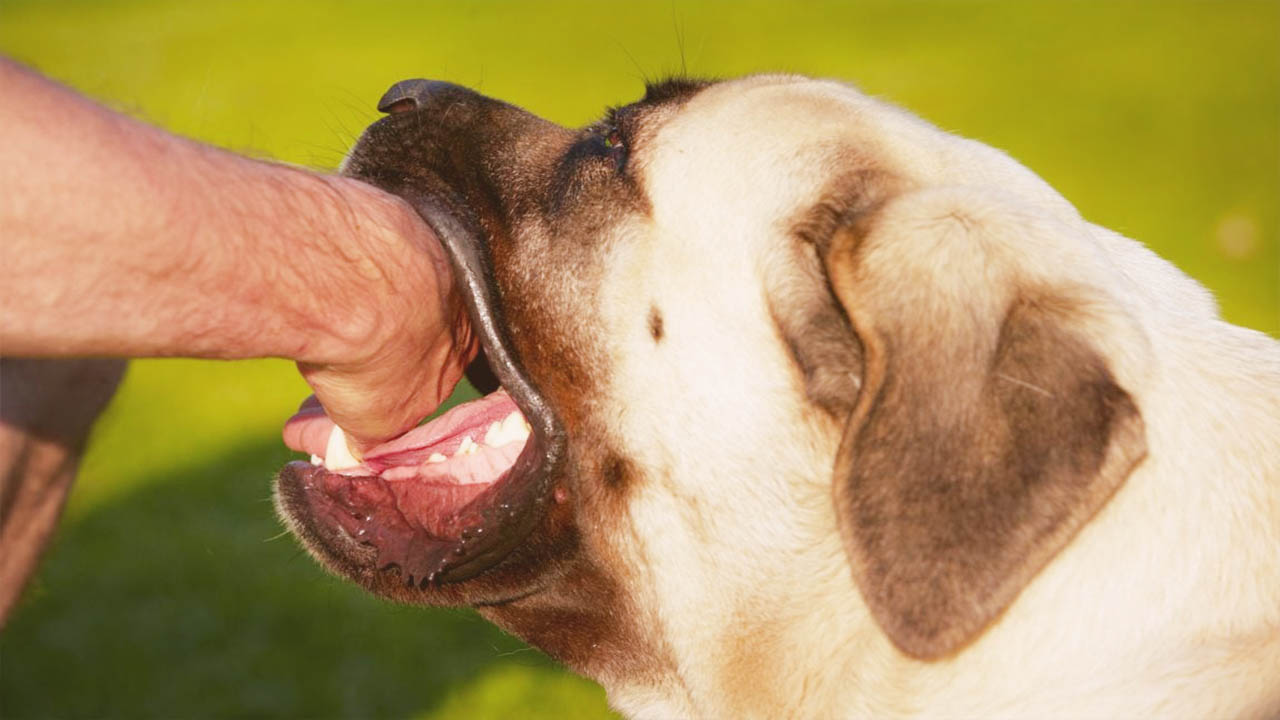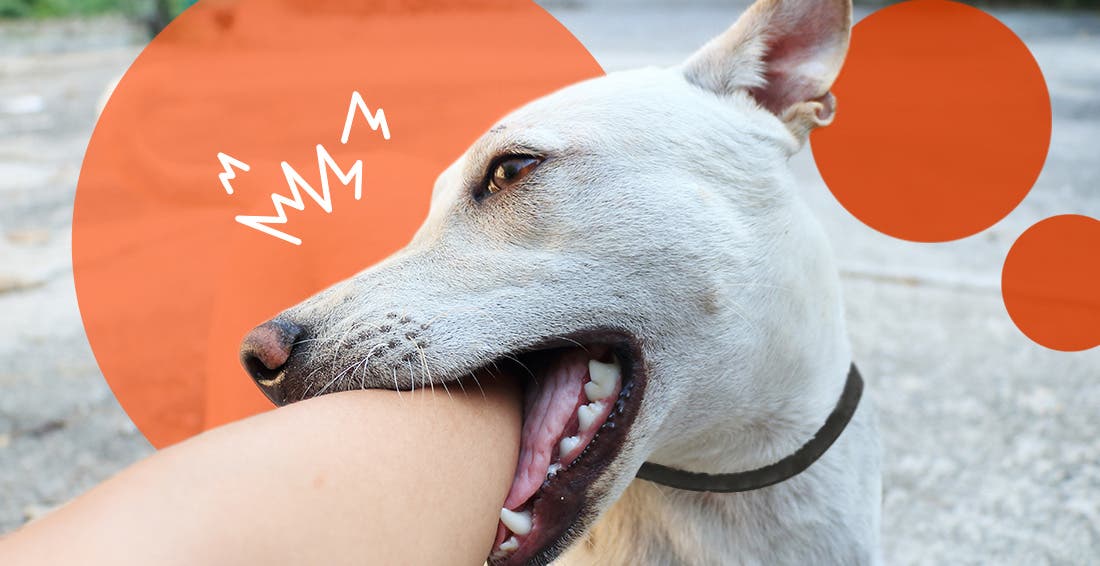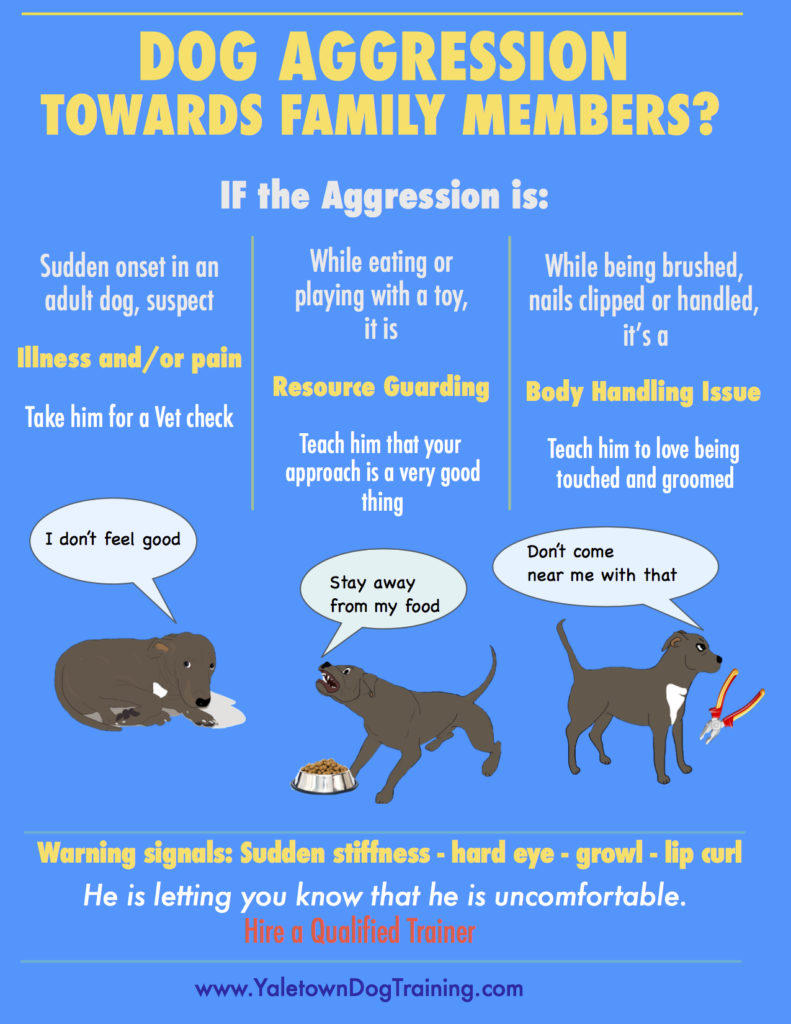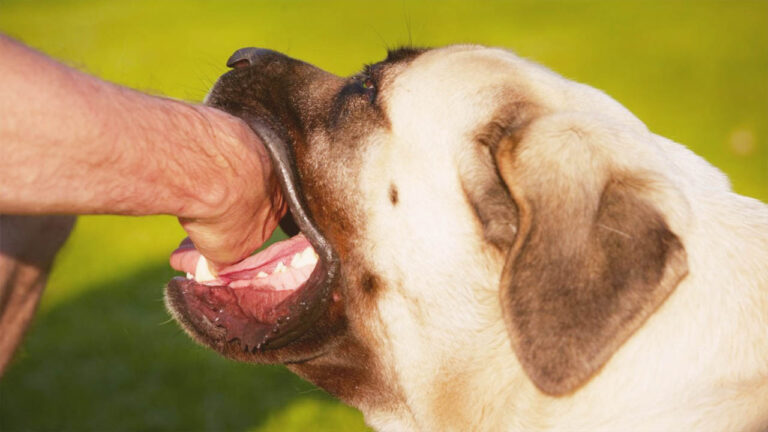If your dog bit you when you tried to move him, it’s essential to seek medical attention immediately. Dog bites can lead to serious infections and require prompt medical care. Welcoming a canine into your home can be a rewarding experience, but there are times when their behavior can be unpredictable. If your dog has bitten you while attempting to move him, it’s crucial to understand the reasons behind this behavior.
We’ll discuss why dogs may resort to biting and how you can prevent such incidents in the future. We’ll also explore the importance of seeking medical attention for dog bites and provide tips for safely handling and moving your pet. Understanding your dog’s behavior and taking appropriate safety measures can help maintain a harmonious and safe environment for both you and your pet.

Understanding Dog Biting
Dog biting is essential for every dog owner to create a safe and harmonious environment for both themselves and their pets. Dogs have their reasons for biting, and it is crucial to identify the causes and signs of aggression to prevent future incidents. In this section, we will delve into the causes of dog biting and explore the signs of aggression in dogs, equipping you with the knowledge to better understand and manage your dog’s behavior.
Causes Of Dog Biting
Dog biting is typically driven by a range of factors that may vary from one dog to another. Here are some common causes of dog biting:
- Fear: Dogs may bite when they feel threatened or scared, especially if they believe there is no way to escape.
- Pain or discomfort: When dogs are in pain or experiencing discomfort, they may bite as a defensive response to protect themselves.
- Protection of territory or possessions: Dogs are known for their instinct to guard what they consider their territory or valuable items, leading to aggression and potential biting.
- Maternal instinct: Female dogs with puppies can display protective behavior and may bite if they perceive a threat to their litter.
- Overstimulation: Dogs that become overwhelmed by intense play or excessive attention may resort to biting as a way to communicate their discomfort.
Signs Of Aggression In Dogs
Recognizing the signs of aggression in dogs can help you identify any potential risks and take appropriate precautions. Here are some common signs of aggression in dogs:
- Growling or showing teeth: This is a clear indication of a dog feeling threatened or displaying dominance.
- Stiff body posture: Dogs with aggressive tendencies often appear tense, with their muscles visibly contracted.
- Direct eye contact: Intense staring or fixating can signal aggression in dogs.
- Snapping or lunging: Dogs may exhibit sudden movements, snapping their jaws or lunging towards a perceived threat.
- Low-pitched growls or barks: These deep vocalizations are commonly associated with an aggressive stance.
- Uncontrolled territorial behavior: Overprotectiveness towards specific areas or objects can be a sign of aggression.
- Body blocking or guarding: Dogs that position themselves between you and others or show possessiveness over items may display aggressive tendencies.
By understanding the causes of dog biting and recognizing the signs of aggression in dogs, you can take proactive measures to prevent incidents and protect yourself, your dog, and those around you. Remember, early identification and appropriate training are key to managing and improving your dog’s behavior in a positive and nurturing way.
Reasons Behind Dog Biting
Moving a dog can sometimes lead to biting behavior, as they may feel threatened or scared. Understanding the reasons behind dog biting, such as fear or guarding instincts, can help prevent such incidents in the future.
Understanding the reasons behind dog biting is crucial in preventing such incidents. Dogs may resort to biting due to various reasons, including fear or anxiety and protective or possessive behavior. By recognizing these underlying causes and addressing them accordingly, dog owners can promote a safer and more harmonious environment for themselves and their pets. Fear or Anxiety Dogs, like humans, can experience fear or anxiety in certain situations.
Understanding the Biting Reasons
When a dog feels threatened or overwhelmed, it may resort to biting as a means of self-defense. This behavior is often rooted in a fearful response to a perceived threat, such as being approached or handled in a manner that triggers their anxiety. Therefore, dog owners need to recognize and respect their dog’s boundaries, especially in unfamiliar or stressful situations. Protective or Possessive Behavior Another common reason behind dog biting is protective or possessive behavior.
Dogs may feel the need to protect their territory, resources, or even their owners from perceived threats. This instinctual response can lead to aggressive behavior, including biting, as a means of safeguarding what they perceive as their own. To mitigate this behavior, dog owners must establish clear boundaries and train their dogs to understand and respect the concept of sharing and cooperation. By creating a safe and supportive environment, addressing their dog’s fears and anxiety, and providing proper training and socialization, dog owners can minimize the risk of their dog resorting to biting as a form of communication or defense.
Preventing Dog Biting
It can be alarming and painful when your dog bites you, especially when you are trying to move them. Preventing dog biting is essential for the safety of both the owner and the pet. Understanding the triggers and implementing proper training and socialization can help minimize instances of biting. By recognizing and managing potential triggers, pet owners can create a safe environment for themselves and their dogs. Let’s explore some effective strategies for preventing dog biting, starting with training and socialization.
Training And Socialization
Training and socialization are crucial aspects of preventing dog biting. Proper training can help dogs understand commands and respond appropriately to various situations. Socialization, on the other hand, exposes dogs to different people, animals, and environments, helping them become well-adjusted and less likely to react aggressively.
Recognizing And Managing Triggers
Understanding your dog’s triggers is essential for preventing biting incidents. Recognizing and managing triggers involves identifying situations or stimuli that provoke aggressive behavior in your dog. It could be food aggression, fear of certain actions, or discomfort in specific environments. Once you identify these triggers, you can take steps to manage them effectively and minimize the risk of a biting incident.

Credit: yourpetandyou.elanco.com
Dealing With A Dog Bite
Getting bitten by your beloved furry friend can be a shocking and distressing experience. Whether it’s due to fear, pain, or some other trigger, it’s important to know how to handle a dog bite. The key is to stay calm and follow the proper steps to ensure your safety and prevent any further complications. This article will guide you through the necessary measures to take when dealing with a dog bite.
First Aid For Dog Bites
Beyond the initial shock, the first action to take after a dog bite is to assess the severity of the wound. If the bite is superficial, it can usually be treated at home with some basic first aid. Here are the steps to follow:
- Wash the wound: Rinse the bite wound thoroughly with mild soap and warm water for about 5 minutes. This helps clean the wound and reduces the risk of infection.
- Apply pressure: Use a clean cloth or sterile gauze to apply gentle pressure to the wound to stop any bleeding.
- Apply an antiseptic: After cleaning the wound, apply an antiseptic ointment to help prevent infection.
- Dress the wound: Cover the bite with a sterile dressing to protect it from further contamination.
- Monitor for infection: Keep an eye on the wound for any signs of infection, such as redness, warmth, swelling, or pus. If these symptoms occur, seek medical attention immediately.
Seeking Veterinary Care
While basic first aid can suffice for minor dog bites, it is crucial to seek veterinary care for more severe wounds. If the bite is deep, bleeding excessively, or shows signs of infection, it’s essential to consult a vet promptly. Here’s why professional care is necessary:
| Why seek veterinary care? |
| – Deep wounds may require stitches to heal properly. |
| – Professional evaluation helps determine the risk of infection and the need for antibiotics. |
| – Rabies and other vaccinations may need to be reviewed and updated. |
| – The vet can guide on preventing future incidents and improving the dog’s behavior. |
Remember, regardless of the severity of the bite, it’s crucial to keep an eye on the wound for any signs of infection. If you notice any redness, swelling, or discharge, do not hesitate to seek medical advice from either a doctor or a veterinarian.
In conclusion, dog bites are unfortunate incidents that can happen even with the most well-behaved pets. By promptly administering first aid when appropriate and seeking professional care when necessary, you can ensure the well-being of both you and your four-legged companion.
Seeking Professional Help
If your dog has bitten you when you attempted to move him, it is crucial to seek professional help to address this behavior. Working with a qualified dog trainer or a veterinary behaviorist can provide you with the necessary guidance and expertise to understand and correct your dog’s aggressive tendencies. Let’s take a closer look at each option:
Finding A Qualified Dog Trainer
A qualified dog trainer can help you address your dog’s biting behavior. They have the knowledge and experience to assess the situation, identify the root cause of your dog’s aggression, and create a tailored training plan to modify their behavior. When looking for a qualified dog trainer, consider the following:
- Search for trainers who have certifications and accreditations like Certified Professional Dog Trainer (CPDT) or Karen Pryor Academy Certified Training Partner (KPA CTP).
- Ask for recommendations from friends, family, or your veterinarian who have had successful experiences with trainers.
- Check online reviews and testimonials from previous clients to get a better understanding of their expertise.
Remember, a qualified dog trainer can provide you with the guidance and support needed to address your dog’s biting behavior effectively.
Working With A Veterinary Behaviorist
In more severe cases or if you suspect that the biting behavior has underlying medical or psychological causes, consulting with a veterinary behaviorist may be necessary. Veterinary behaviorists are veterinarians who specialize in animal behavior and can offer a comprehensive evaluation of your dog’s aggression. Here’s what you need to know:
- Ask your veterinarian or local animal hospital for recommendations on reputable veterinary behaviorists in your area.
- Veterinary behaviorists will conduct a thorough assessment, considering various factors such as the dog’s medical history, past experiences, and environment.
- Based on the evaluation, a veterinary behaviorist will create a treatment plan that takes into account both behavioral and medical interventions to address your dog’s biting behavior.
Seeking help from a veterinary behaviorist ensures that both medical and behavioral aspects of your dog’s aggression are taken into consideration.

Credit: yaletowndogtraining.com
FAQ On My Dog Bit Me When I Tried To Move Him
Can Dogs Bite If They Are Scared Or Anxious?
Yes, dogs may bite if they feel scared or anxious. It is important to understand your dog’s body language and provide a safe and calm environment to prevent such behavior. Seeking professional help from a dog behaviorist can also be beneficial in addressing this issue.
How Can I Safely Move My Dog Without Getting Bitten?
To safely move your dog without getting bitten, it is recommended to use positive reinforcement techniques. Gradually introduce your dog to the concept of being moved, using treats and praises to reward calm behavior. Seek guidance from a professional dog trainer to learn the appropriate techniques for your specific situation.
Why Did My Dog Bite Me When I Tried To Move Him?
There can be several reasons why your dog bit you when you tried to move him. It might be due to fear, pain, or feeling that their personal space is being invaded. Understanding the underlying cause and working with a professional can help address this behavior and prevent future incidents.
Conclusion
Dealing with a dog that bites when you try to move him can be a challenging situation. It’s important to understand the reasons behind your dog’s aggression and seek professional guidance. With patience, proper training, and creating a safe environment, you can work towards resolving this issue and building a stronger bond with your furry friend. Remember, a happy and well-behaved dog is a joy to have around.



